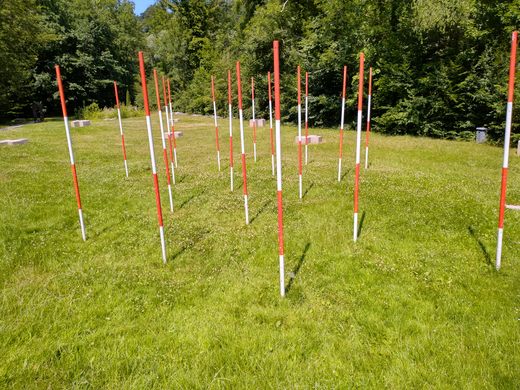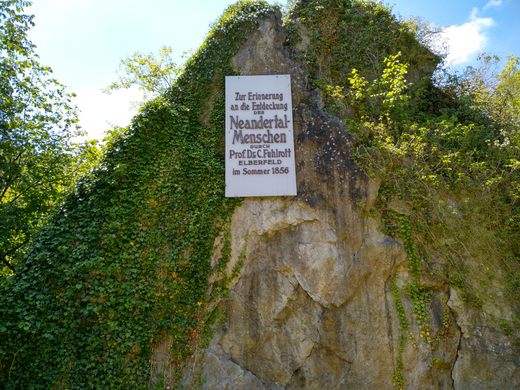Feldhofer Grotto
The first recognized Neanderthal remains were found in this now-lost cave in 1856.
In the summer of 1856, Italian quarrymen came across an unusual discovery in a grotto while mining limestone. Lying within the ground were bits of the fossilized skeleton of a Neanderthal man, which they initially believed belong to some sort of cave bear.
Even before the publication of Darwin’s On the Origin of Species, Homo neanderthalensis was recognized as an archaic form of human. Despite not being the first discovery of what we nowadays consider Neanderthal remains, the bones found at the Feldhofer Grotto in the name-giving valley along the Düssel River directly led to the first recognition of the species.
The discovery site looks nothing like it did when the long-dead Neanderthal man wandered the area, and it bears little resemblance to the environment in which his remains were found thousands of years after his death. Mining completely transformed the valley from a narrow gorge into a wider landscape with sweeping sides.
The location of the cave remained unknown for well over 100 years after the discovery due to the extensive effects the mining had on the landscape. During a digging expedition in 1997, more bones and stone tools were found buried in the clay sediments. This discovery helped identify the location of the former cave.
Today the site is marked by an architectural garden that pinpoints the exact spot where the grotto used to be. A narrow section of limestone is left near the entrance to showcase what the area used to look like. Slabs of stone and plaques give a detailed history of the discovery and the timeline of humans. A museum has also been erected nearby to document the history of humans and our ancient relatives.
Know Before You Go
The discovery site ("Fundstelle") is just west of the museum and is accessible free of charge. If you travel by public transport, take S-Bahn S28 from Düsseldorf to Neanderthal.
















Follow us on Twitter to get the latest on the world's hidden wonders.
Like us on Facebook to get the latest on the world's hidden wonders.
Follow us on Twitter Like us on Facebook